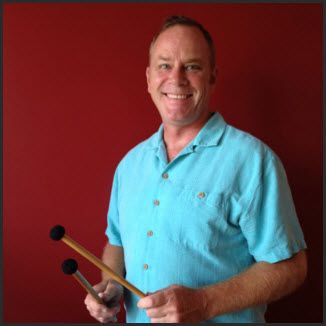To tune the timpani the player will acquire the desired note from a tuning fork, piano, marimba, or some other pitched instrument and then try to tune their drum to that pitch.
The younger player or a player that hasn’t had a lot of experience in tuning might find it difficult to ‘zero in’ on a single pitch like this and what I’ve found is that a lot of students tend to tune their drum on the sharp side of the pitch if not totally sharp and out of tune.
It occurred to me that in the orchestra or band the timpanist is most always playing along with the rest of the ensemble and the ensemble is in most cases playing a chord of some kind. The timpani note is a part of the chord and the player can hear if their drum is in tune or not pretty easily.
Practice Tuning Timpani With Piano Chords
If you are trying to tune a D on the 26” drum and an A on the 29” drum have someone play a D Major chord on the piano for you. You will hear the D and the A because they are part of the chord and you will also hear the third which is an F#. You should find that it’s easier to tell if you are in tune or not because of the relationships between all of the notes being played on the piano and the timpani.
Try the same exercise using a different chord like a D minor or a B minor 7. Go ahead and leave out the D and A on the piano and just play the other parts of the chord on the piano and see how well you can make the chord sound between the piano and the timpani.
This is a great practice exercise to help the timpanist develop their ear.

Thank you for sharing this video on the Tune Timpani.